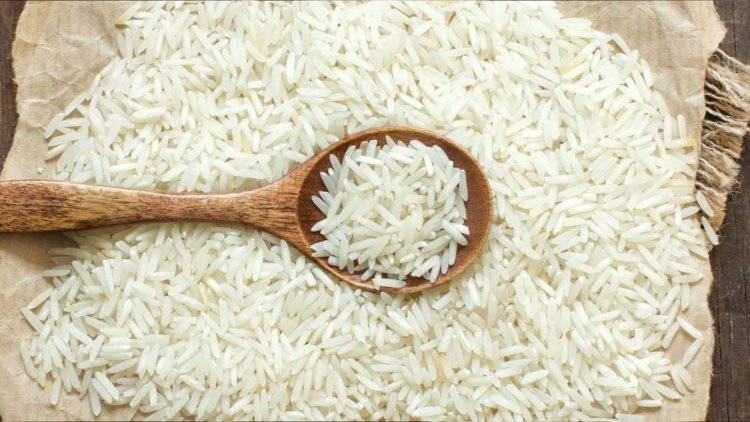India limits rice exports to put an end to ten years of price stability
Rice growing in India was hampered by uneven monsoon rainfall, which led to export limitations in September. Floods also reduced Pakistan's output, despite rising consumption in major importers like Bangladesh and the Philippines. Because of this, experts predict that in 2022–2023, worldwide demand will exceed global output.

After more than a decade of stability, India's recent restrictions on rice exports might spark a surge in world prices, according to traders, as New Delhi's protectionist stance coincides with declining supply in other key countries and rising worldwide demand.
Rice growing in India was hampered by uneven monsoon rainfall, which led to export limitations in September. Floods also reduced Pakistan's output, despite rising consumption in major importers like Bangladesh and the Philippines. Because of this, experts predict that in 2022–2023, worldwide demand will exceed global output.
This is bad news for the Asian and African nations that depend on rice imports for up to 60% of their needs.
Global rice prices have increased by more than 10% since India, the largest producer of rice in the world, banned the export of broken rice and imposed a 20% export tariff on several non-basmati kinds. The worldwide rice price index for the Food and Agriculture Organization increased 2.2% last month to reach an 18-month high.
According to Nitin Gupta, vice president of Olam India's rice division, "the worldwide market has increased and it will increase more."
After COVID-19's production and supply chain disruptions left governments throughout the world scrambling to control food inflation, Russia's invasion of Ukraine withdrew millions of tonnes of food from the world's markets, setting a record for inflation earlier this year.
Even Nevertheless, before India's export restrictions went into effect a few months ago, business and government leaders in Asia predicted that rice prices would remain stable because of adequate supplies.
Since neither Russia nor Ukraine is a major producer of wheat, rice was spared from the conflict. Additionally, despite the COVID-related disruptions for other goods, rice supplies had remained largely stable.
Top exporters Thailand and Vietnam currently have insufficient stockpiles to offset India's export restrictions and extensive output losses. Three international traders predicted that, citing their own internal analyses, global rice inventories might reach their lowest level in at least five years in 2023.
When demand is increasing from top importers, it is difficult for others to replace dropping Indian supplies because India controls 40% of the world trade, according to Gupta.
LOWERED OUTPUT FORECASTS
The United States Department of Agriculture (USDA) has decreased its projection for world rice production for 2022–2023 to 508 million tonnes, the lowest level in four years. The EIA had predicted 512 million tonnes of output for the entire year just one month prior.
However, because to the adverse weather conditions that threaten crop harvests in nations like China, India, Bangladesh, and Pakistan, some of the largest global trading firms anticipate a sharper reduction to roughly 500 million tonnes.
Due to dry conditions, many Indian farmers chose not to plant any rice, and after torrential rains destroyed the maturing paddy fields, there were worries about food inflation.
The farm ministry predicted in September that India's output of summer-sown rice will decline to 105 million tonnes in 2022/23, down 6%, and private traders predict it might fall as low as 100 million tonnes.
Due to higher heat and dryness in some rice-growing regions, China, the world's largest consumer of the grain, may see a 2.9% decrease in rice production from a year ago to 206 million tonnes, according to Shanghai JC Intelligence Co Ltd, a consultancy.
This is a significant improvement over the previous year, when India's record 21.2 million tonnes of rice exports—30% less expensive than those of competing suppliers—helped to stabilise world prices while other food commodities experienced a surge owing to supply interruptions.
India's rice exports are expected to decrease by about a quarter this year after the September curb.
Declining in Asia
According to B.V. Krishna Rao, president of India's Rice Exporters Association, nearly all major producers are struggling with lower rice yield, and the world's demand will certainly exceed the world's supply.
Export limitations imposed by India have increased sales for rival suppliers Vietnam, Thailand, and Myanmar but have decreased the amount of surplus stock that may be exported, according to Rao.
According to government statistics, Vietnam's unmilled rice production is expected to remain constant at 43 million tonnes from previous year.
Neighbouring Anucha Burapachaisri, a government spokesperson, stated that Thailand wants to export 7.5 million tonnes this year, an increase of nearly 7% from its previous goal of 7 million tonnes.
According to dealers, the two together can only supply an additional 2 million tonnes of rice to make up for the shortage caused by India.
Pakistan, meanwhile, is unable to benefit from India's export restrictions since severe flooding devastated its crop. According to the USDA, its rice production could decrease 18% to 7.4 million tonnes.
Similar to India, other Asian producers including China, Bangladesh, and the Philippines experienced adverse meteorological conditions like drought, flooding, typhoons, and cyclones.
According to Himanshu Agarwal, executive director at Satyam Balajee, India's largest rice exporter, "the exceptional confluence of events in Asia will badly hit consumers in many parts of the world and many poor consumers will have to either buy far more expensive, superior grades or go without rice."
"The decision will be challenging.




 admin
admin 




















